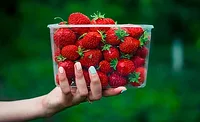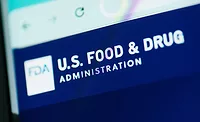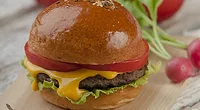California Tightens Requirements for Labeling Products as 'Compostable'
A number of challenges need to be addressed for compostable packaging to meet its potential

Image credit: manyakotic/iStock / Getty Images Plus via Getty Images
The California Department of Resources Recycling and Recovery (CalRecycle) recently conducted a study to assess the feasibility of bifurcating compostable products that are suitable for use in organic agricultural applications from products that are not suitable for use in these types of applications. Based on that study, CalRecycle determined that "…it is not feasible to separate the collection of products in order to recover organic waste that is suitable for use in organic agricultural applications from the collection of products not suitable for use in organic agricultural applications."1 The study, which was required under California law AB 1201, will impact all products, including food packaging, sold in California that are labeled as "compostable."
AB 1201 was enacted on October 5, 2021, to address the requirements for products labeled as compostable or home compostable. The law modified Section 42357 of California's Public Resources Code regarding requirements for substantiating compostable or home compostable claims in the state. Section 42357(g)(1)(b) now states that, as of January 1, 2026, products may not be labeled as compostable or home compostable in California unless, among other things, they are "…an allowable agricultural organic input under the requirements of the United States Department of Agriculture National Organic Program (NOP)."
In defining "compostable," AB 1201 references ASTM International standards D6400 ("Standard Specification for Labeling of Plastics Designed to be Aerobically Composted in Municipal or Industrial Facilities"2) and D6868 ("Standard Specification for Labeling of End Items that Incorporate Plastics and Polymers as Coatings or Additives with Paper and Other Substrates Designed to be Aerobically Composted in Municipal or Industrial Facilities"3). These two standards require that the material biodegrades in a specified period of time and does not leave a toxic residue in the soil.
Food Safety Concerns
The allegation is made that "toxins" that may be present in soil as a result of compostable plastics can be transferred through the root system to the edible portions of plants, creating a food safety issue. Both D6400 and D6868 include the following statement:
"The following safety hazards caveat pertains to the test methods portion of this standard: This standard does not purport to address all of the safety concerns, if any, associated with its use. It is the responsibility of the user of this standard to establish appropriate safety, health, and environmental practices and determine the applicability of regulatory limitations prior to use."2,3
Thus, under the California law, compostable packaging must meet two criteria, which can be conflicting. The first is to fulfill the objective of most packaging materials—i.e., to preserve the quality and safety of food. This includes acting as a barrier to external factors that affect food quality, such as oxygen and other gases, water activity, light, and temperature, in addition to preventing microbiological contamination. The second is the absence of chemical substances that may be considered toxic. The question concerns how "toxic" is defined.
Packaging made from paperboard may not be considered to raise the same issues concerning the presence of toxic contaminants if fluorinated substances are absent, if it is coated with a compostable coating, and if it is absent of inks and other additives that are not compostable. Examples of compostable polymers for coatings include polylactic acid (PLA) polyhydroxyalkanoates (PHA), which are derived from renewable resources such as cornstarch and sugarcane. Research to expand the available compostable materials for food packaging, along with research to improve barrier properties of those materials, is ongoing.
National Organic Program Requirements
Under the provisions of AB1201, the implicit definition of "toxic" is taken from the U.S. Department of Agriculture (USDA) National Organic Program (NOP). The purpose of the NOP is to develop and enforce national standards for what can be claimed as organically produced agricultural products available in the U.S. The four labeling categories for organic products are:
- 100 percent organic
- Organic
- "Made with" organic ingredients
- Specific organic ingredients.
To claim a product as "organic," the product must follow specified production, handling, and labeling standards, and go through the organic certification process. Compost is allowed in organic agricultural production if the materials used to produce it are specifically allowed as compost under the NOP.
Looking for quick answers on food safety topics?
Try Ask FSM, our new smart AI search tool.
Ask FSM →
The NOP program became overridingly important in California as AB 1201 prohibits the sale of a product that is labeled with the term "compostable" or "home compostable," unless the product satisfies a specified certification process and "is an allowable agricultural organic input under the requirements of the United States Department of Agriculture National Organic Program." The NOP regulations include a National List of Allowed and Prohibited Substances.4 The regulations also specify that the only synthetic materials acceptable as compost feedstocks are newspapers or other recycled paper without glossy or colored ink. (Note: In August 2023, the Biodegradable Products Institute (BPI) submitted a petition to the U.S. Department of Agriculture requesting that the definition under the NOP regulations be expanded to include compostable materials that meet designated ASTM specifications. BPI said that that these changes are needed to align with compostable packaging regulations adopted by states. The petition remains pending.)
The certification process has its own problems. However, almost too cleverly, the provision on allowable agricultural inputs also provides for a study by CalRecycle to determine whether bifurcated waste processing systems can feasibly "separate the collection of products… to recover organic waste that is suitable for use in organic agricultural applications from the collection of products [that are] not suitable." A conclusion of infeasibility meant that compostable packaging not meeting NOP requirements would be de facto prohibited from use.
CalRecycle's Decision and Justification
In June 2023, in accordance with the legislative directive in AB 1201, CalRecycle conducted a survey of all 34 mixed material composting facilities in California. One of the questions on the survey pertained to the type of plastic and plastic-containing materials that are accepted and incorporated into finished compost. Of the 24 responses received, 20 facilities reported that they consider plastic and plastic-containing materials as contaminants and screen them out. The other four facilities responded that they accept compostable plastic bags. The top concern related to accepting compostable plastic and plastic-containing materials is physical contamination.
The survey also included questions on the types of paper and fiber that are accepted. Of the respondents, 83 percent accept uncoated paper/paperboard, 29 percent accept bamboo fiber, 21 percent accept wax-lined paper/paperboard (e.g., hot or cold cups), 17 percent accept sugarcane/bagasse fiber, and 13 percent accept clay-coated paper/paperboard (e.g., cereal boxes). When the survey participants were asked if it would be feasible to process two separate organic waste streams to keep organic wastes that are acceptable compost feedstocks under the NOP separate from products that are not acceptable compost feedstocks under the NOP, 58 percent stated it would not be feasible, 25 percent responded it would be feasible, and another 12 percent said it would be feasible, but expensive.
CalRecycle presented the results of the survey at a public workshop on November 1, 2023. During the workshop, 22 individuals provided oral comments and 17 individuals submitted written comments after the workshop.1
A number of the commenters addressed potential contamination. Comments from WinCup Inc. noted that contamination is a concern for both single-stream and bifurcated composting systems and that the root cause of contamination is "consumer awareness, which is best addressed with better education and consumer-friendly programs—both of which can and should be addressed using funding generated by SB 54."5 BPI pointed out that in Minneapolis, where only certified compostable items are allowed, contamination rates have consistently been at or below 1 percent. Yet, in a summary of comments received, CalRecycle stated that comments enumerating the range of systemic solutions that can be employed to reduce contamination are not relevant to the feasibility determination.
Several commenters also pointed out that over one-third of respondents to the survey indicated that bifurcated streams are feasible, and several of them added that SB 54 designated funds to support the processing of certified compostable products and to create or bolster end markets for them. CalRecycle said those comments were "not relevant to the feasibility determination at issue."
Discussing specific compostable plastics, Beyond Plastics LLC suggested that extensive studies have shown that PHA can be identified and separated within industrial conditions with a remarkable accuracy rate of 99.8 percent. Yet, the company pointed out that California has constrained the adoption and utilization of this technology in part by the prohibition on labeling PHA-made products as "biodegradable."
WinCup concluded its comments with the following statement:
"Respectfully, we ask that CalRecycle engage in this bifurcation determination with a forward-looking view that takes into account more than just a static analysis of the compost infrastructure and the desires of composters as they exist today. This is a critical opportunity for CalRecycle to move both compostable products manufacturers and composters towards a mutually beneficial goal of implementing and building a better composting system that will more effectively serve the State's organic waste diversion and circularity goals."5
Future Trends
The global compostable plastic packaging material market is expected to grow from $1.89 billion to $3.1 billion by 2033, according to Future Market Insights.6 A number of challenges need to be addressed for compostable packaging to meet its potential, as was freely admitted by proponents of a bifurcated system. These challenges are the subject of a publication, "Ensuring the Success of Compostable Packaging," by the Sustainable Packaging Coalition.7
Among the challenges identified by the Coalition are access to composting infrastructure, confusion about the right application for compostable packaging, lack of harmonization/standardization across categories, and regulatory inconsistency. With respect to regulatory inconsistency, the publication states, "Some states (e.g., CA) are creating their own definitions for what packaging will be considered compostable, or may set unique rules for how products should be labeled."7
The challenges for establishing the legitimacy of compostable packaging are numerous and complex. However, if states such as California move to prohibit the continued development of composting facilities, then the industry will not have an opportunity to work through these issues. Likewise, food companies will also be hamstrung in having such products available to help satisfy their own environmental and sustainability goals and the desires of their customers.
References
- California Department of Resources Recycling and Recovery (CalRecycle). "Public Notice: AB 1201 Bifurcated Collection Determination." December 5, 2023. https://www2.calrecycle.ca.gov/PublicNotices/Details/5291#:~:text=Assembly%20Bill%20%28AB%29%201201%20%28Ting%2C%20Chapter%20504%2C%20Statutes,efficiently%20to%20recover%20organic%20waste%20in%20both%20streams.
- ASTM International. "ASTM D6400-23: Standard Specification for Labeling of Plastics Designed to be Aerobically Composted in Municipal or Industrial Facilities." Last updated March 10, 2023. https://www.astm.org/d6400-23.html.
- ASTM International. "ASTM D6868-21: Standard Specification for Labeling of End Items that Incorporate Plastics and Polymers as Coatings or Additives with Paper and Other Substrates Designed to be Aerobically Composted in Municipal or Industrial Facilities." Last updated February 10, 2021. https://www.astm.org/d6868-21.html.
- U.S. Department of Agriculture (USDA) Agricultural Marketing Service. "The National List of Allowed and Prohibited Substances." https://www.ams.usda.gov/rules-regulations/organic/national-list.
- CalRecycle. "Plastic Pollution Prevention and Packaging Producer Responsibility Act: SB 54." https://calrecycle.ca.gov/packaging/packaging-epr/.
- FMI. "Compostable Plastic Packaging Material Market Snapshot (2023 to 2033)." June 2023. https://www.futuremarketinsights.com/reports/compostable-plastic-packaging-market.
- Sustainable Packaging Coalition. "Ensuring the Success of Compostable Packaging." Last updated June 1, 2022. https://sustainablepackaging.org/wp-content/uploads/2022/01/Ensuring-the-Success-of-Compostable-Packaging.pdf.
George G. Misko, Esq., is a Partner in the Washington, D.C., office of Keller and Heckman LLP.









